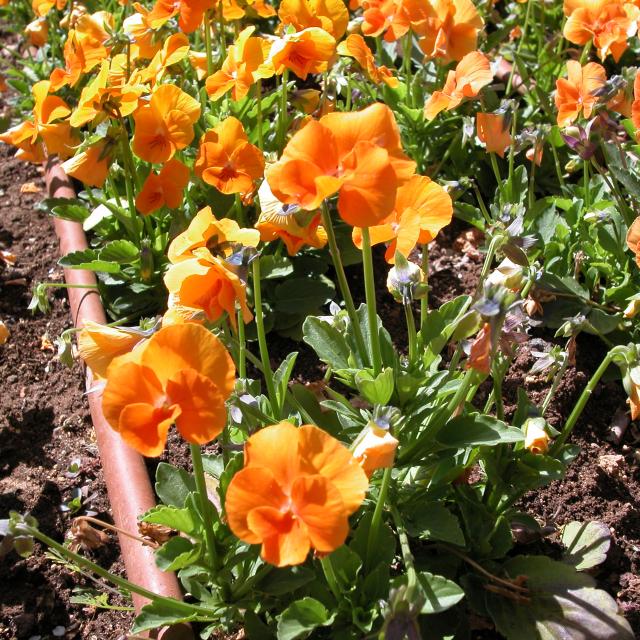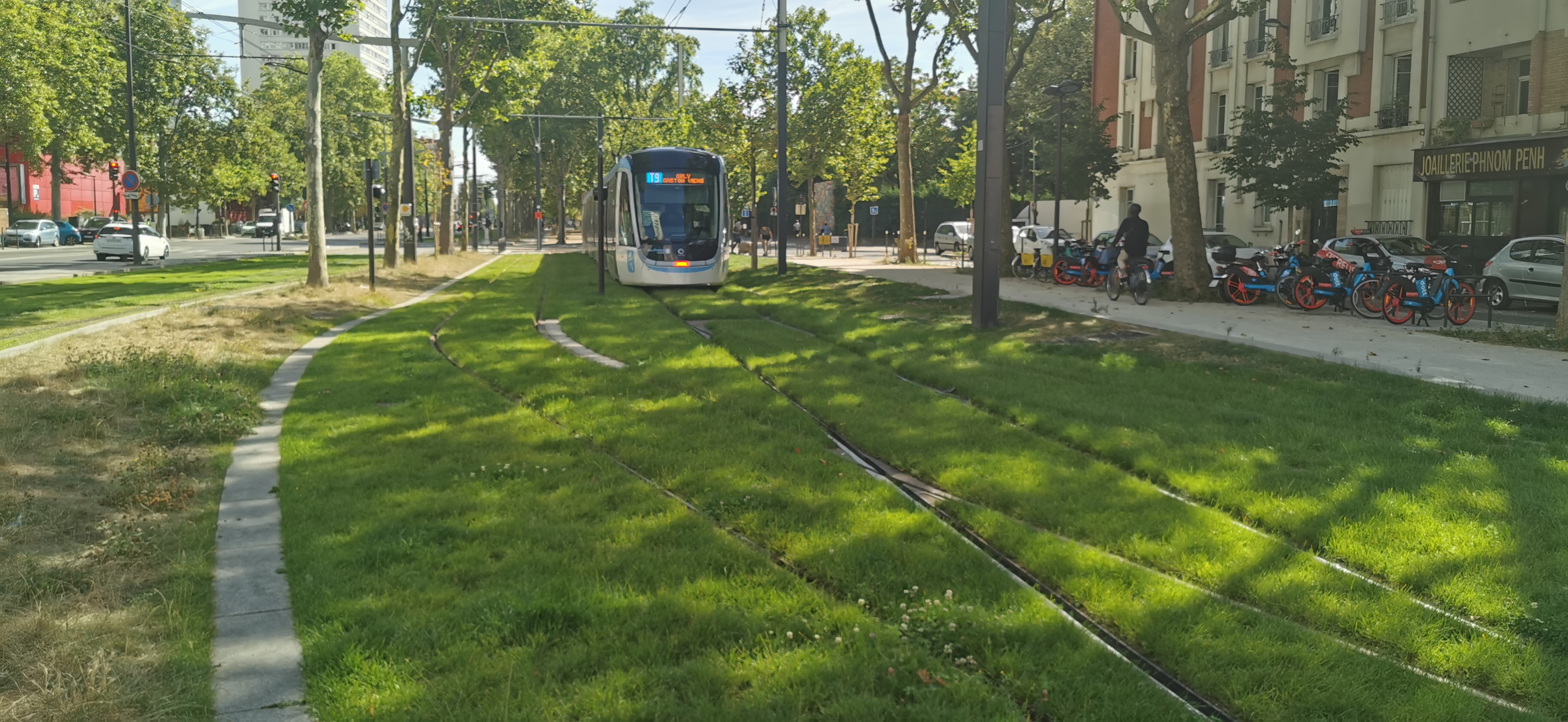Global warming is an undeniable fact, which has major repercussions for our planet. The greenhouse gas emissions caused by human activity have led to an increase in the average temperatures worldwide, changing the weather patterns and exacerbating the extreme meteorological occurrences. Summer after summer we experience these weather events.

Wildfires and drought in Europe, devastating floods in Pakistan, torrential rain in the U.S.A., water shortages… The climate has gone crazy, reminding us how urgent it is to take these changes into account. For some years now, the GIEC (Intergovernmental Panel on Climate Change) reports have been coming one after the other and they are all alike, each time with alarming findings. Among the most worrying consequences of this climate change are the urban heat islands, zones where the temperatures are considerably higher than in the surrounding areas, because of the accumulation of heat in the urban materials, such as concrete, asphalt and metal structures.
Heat islands are the direct result of the growing urbanisation and the transformation of natural landscapes into dense urban areas. With the rapid expansion of the cities and the proliferation of impermeable infrastructures, the capacity of the urban surfaces to absorb and retain the heat of the sun has risen significantly. Consequently, during the hottest months of the year, the cities actually become furnaces, with temperatures that could surpass those of the surrounding areas by several degrees.
The effects of the urban heat islands are multiple and they affect not only the comfort of the city-dwellers, but also their health and well-being. During heat waves, these overheated zones become veritable heat traps, exposing the residents to the increased risks of heat stroke, dehydration and other heat-related health problems. Furthermore, excessive heat can worsen air pollution and encourage the formation of ground-level ozone and other atmospheric pollutants, leading to respiratory and cardiovascular problems among the city’s inhabitants.
To address these challenges, a solution has emerged as a promising way of mitigating the effects of the urban heat islands and improving the quality of life in the cities: the creation of green cities. These green cities, also know under the name of sustainable or ecological cities, are urban landscapes designed to incorporate more vegetation and green spaces, thus re-establishing the balance between concrete and nature. This innovative approach to urban planning seeks to create urban environments that are more resilient, more sustainable and more enjoyable for the city’s inhabitants.
The solution for mitigating the effects of the heat islands consists of increasing the plant cover in the urban areas. The creation of parks and communal gardens, the installation of tram tracks with vegetation and the adoption of green roofs are all effective ways of introducing more greenery into our cities. Apart from their attractive appearance, these green spaces offer a multitude of environmental and social benefits, helping to lower the temperatures, improve air quality, enhance biodiversity and strengthen social ties between the inhabitants

Tramways with vegetation planted along the tram lines create green corridors and improve air quality
The parks and green spaces play many roles and have a beneficial impact on not only the health of the individuals, but also on the environment and the economy. They will be even more effective if there is an irrigation system available during the heat waves (otherwise the effect is 4 times less). The more mature trees there are in a park, the greater will be the cooling effect. In Gothenberg (Sweden), the difference in the maximum temperature between a park and the built-up surrounding area was measured at 5.9° C. In Mexico, the cooling effect of a park was observed as far as 2 kms away.
Individual trees or those planted along the side of the road can reduce the temperature by 2° to 3° C as a result of evapotranspiration and shading. The greater the number of trees, with a dense foliage, appropriate applications of irrigation water and planted and anchored in the open ground, the more effective will be the cooling process.
Trees, in particular, play a crucial role in combatting the urban heat phenomenon. Apart from providing shade and cooling the ambient air through the process of evapotranspiration, they act as carbon sinks by absorbing the carbon dioxide in the atmosphere, thus helping to mitigate the effects of climate change. Furthermore, trees have a positive effect on the mental and physical well-being of the city-dwellers by creating leisure and relaxation areas, reducing stress and improving the overall quality of life.
It should be noted that in one year, a tree…
- Cools just like ten air conditioners operating continuously.
- Absorbs 2,800 litres of rainwater.
- Filters 27 kilogrammes of air pollutants.
There are around 200 million spaces along our city streets where trees could be planted. This leads to the possibility of absorbing 33 million extra tonnes of CO2 each year and saving more than 4 billion euros on energy costs.
Green roofs are another solution for combatting the urban heat effects. By covering the roofs of the buildings with layers of vegetation, surfaces are created that absorb the heat, thus reducing the quantity of heat reflected and released into the atmosphere. Moreover, green roofs act as a form of natural insulation, reducing the need for air conditioning and heating of the buildings, and as a result helping to reduce the emissions of greenhouse gases. Their effectiveness depends strongly on the type of plants, the thickness of the substrate and irrigation. The plant growth should be intensive and the roof should be damp for it to be efficient. In Hong Kong, having vegetation has resulted in a 1° drop in the air temperature at 1.50 m. from the roofs.
The living walls, for their part, protect the building from the sun’s rays and reduce the surface temperature of the walls. The air temperature near the façade is greatly reduced but it is negligible at 1 m.
We have lost count of the number of cities that have constructed or are in the process of constructing a tramway. This has almost become an obligatory step for those who want to keep up-to-date and adopt a sustainable approach in matters of public transport.
Tramways with vegetation planted along the tram lines create green corridors and improve air quality (with aesthetic, ecological, acoustic and even economic advantages). The grass areas will be 30 degrees cooler than the asphalt or paved area and 14 degrees cooler than the bare soil during the heat of the summer.
However, for this urban vegetation to prosper and play an effective role in the mitigation of the heat island effect, it is essential to manage the water appropriately.
To survive, the vegetation requires water, especially the young plants. That is where irrigation comes in, and more specifically drip irrigation. Unlike the traditional irrigation methods, which can waste substantial amounts of water through evaporation and run-off, drip irrigation meets the plant’s needs by applying water directly to the root zone, where it is most required. This allows for significant amounts of water to be saved, 50% more than with traditional irrigation methods.
This is the most effective approach as far as irrigation is concerned, which allows for any kind of plant to be irrigated, no matter what the topography and in any kind of climate.
By reducing the effects of urban heat, the green cities provide certain tangible benefits for the inhabitants. Apart from the lowering of the summer temperatures and improving the air quality, these greener environments also help to reduce the incidence of health risks caused by the extreme heat, enhance biodiversity and strengthen social ties between the inhabitants. Furthermore, by improving the cities’ resilience in the face of climate change, the green cities help to guarantee a more sustainable and prosperous future for generations to come.
Within a context where the effects of global warming are increasingly making themselves felt, it is essential for urban decision-makers to adopt urban planning and design strategies that fully integrate the green city principle. By investing in the greening of urban environments and putting in place efficient irrigation systems, the cities can not only improve the quality of life of their residents, but also boost their resilience in the face of future climate challenges.

